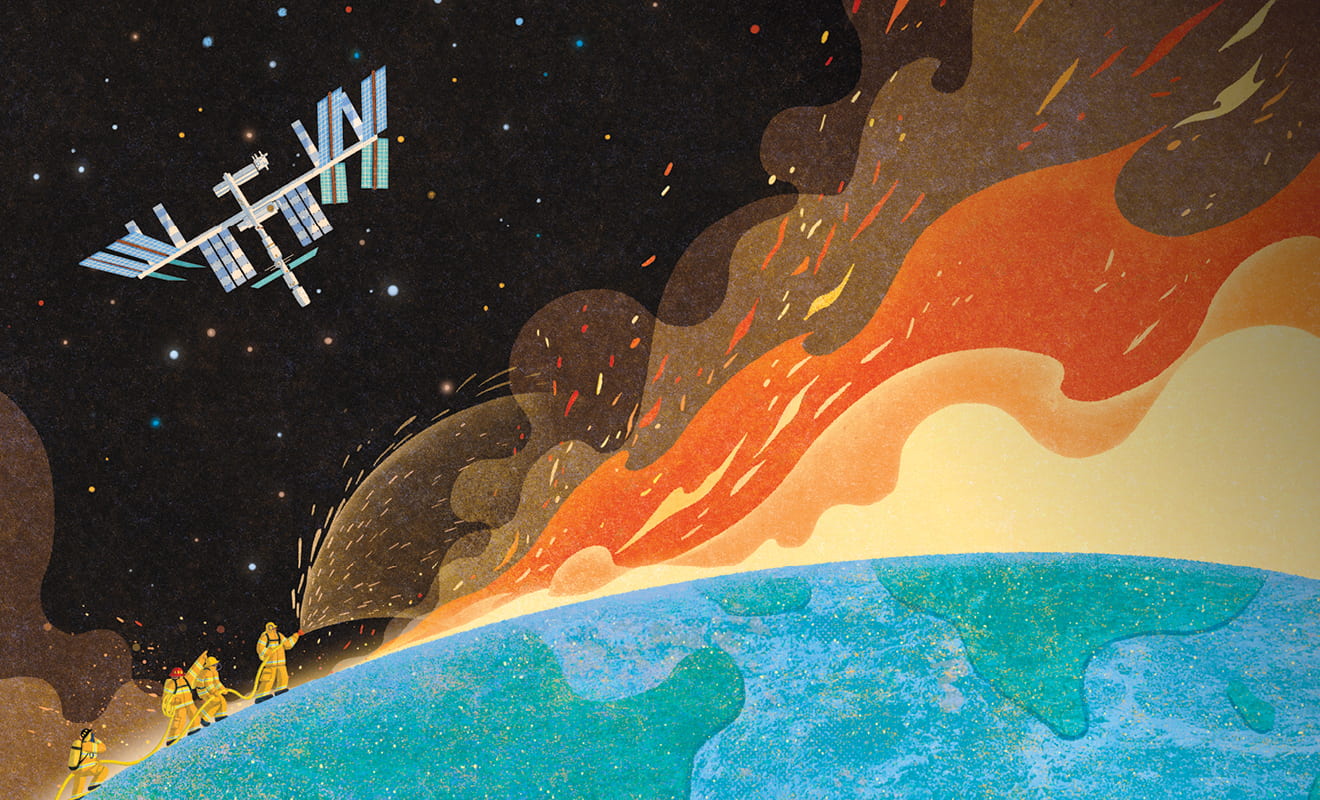Wildfires and Microgravity
For a better understanding of how fire behaves on Earth, WPI researcher James Urban is looking, oddly enough, to outer space. Specifically, Urban is using the microgravity conditions on the International Space Station (ISS) to better understand how non-steady flame behavior causes wildfire to spread. In microgravity the non-steady behavior can be controlled instead of being driven by Earth-based forces such as gravity.
Urban, assistant professor of fire protection engineering, and his team will work on a study funded by the National Science Foundation and sponsored by the ISS U.S. National Laboratory.
As the study’s principal investigator, Urban says the unpredictable nature of fire is attributed to many variables; being able to remove some of the most influential variables allows for a clearer understanding of fire behavior. The pressing need for this research is evident in the recent and ruinous wildfires that have cost lives, left scorched stretches of land, and destroyed astronomical amounts of property around the globe.
“The ultimate goal is to reduce the loss of lives, structures, and the danger posed to responders,” Urban says. “If we have a deeper understanding of the physical processes driving wildfires, we can recreate hypothetical wildfire situations and design communities to be more resilient against them. We can better predict under what conditions we can do safe, controlled burns. And when we do have extreme fires, we can better predict how the fire is going to behave and allocate resources appropriately.”
By understanding how flames behave on a smaller scale, we can gain insight and apply that to wildfire behavior.
James Urban
Urban’s team will take a multipronged approach to understand fire behavior involving experiments on the space station and in WPI’s labs. Researchers are seeking ways to understand what variables contribute to a fire’s movement, spread, and increased intensity.
“Right now, our ability to develop a physical wildfire model and use such a model to predict what an active wildfire will do in a useful timescale is very limited,” Urban says. “By understanding how flames behave on a smaller scale, we can gain insight and apply that to wildfire behavior.”
To do that, the ISS offers an exceptional opportunity. In the microgravity environment, the typical and unstable effects of gravity on earth—including gravity-driven buoyancy flow (e.g., hot flame gases rising)—are removed. Urban’s team plans to simulate non-steady flame behavior seen in wildfires, but in a controlled fashion by dynamically changing wind speed for experiments inside a miniature wind tunnel. By controlling the non-steady flame behavior, researchers can investigate the dynamic flame behaviors to more accurately forecast potential fire spread in a natural environment.
“One of the best ways to solve really hard problems is to solve similar, easier problems first,” Urban says. “Here wildfire behavior is the hard problem, and I hope that this project turns out to be one of those easier problems that made understanding wildfires more manageable.”



